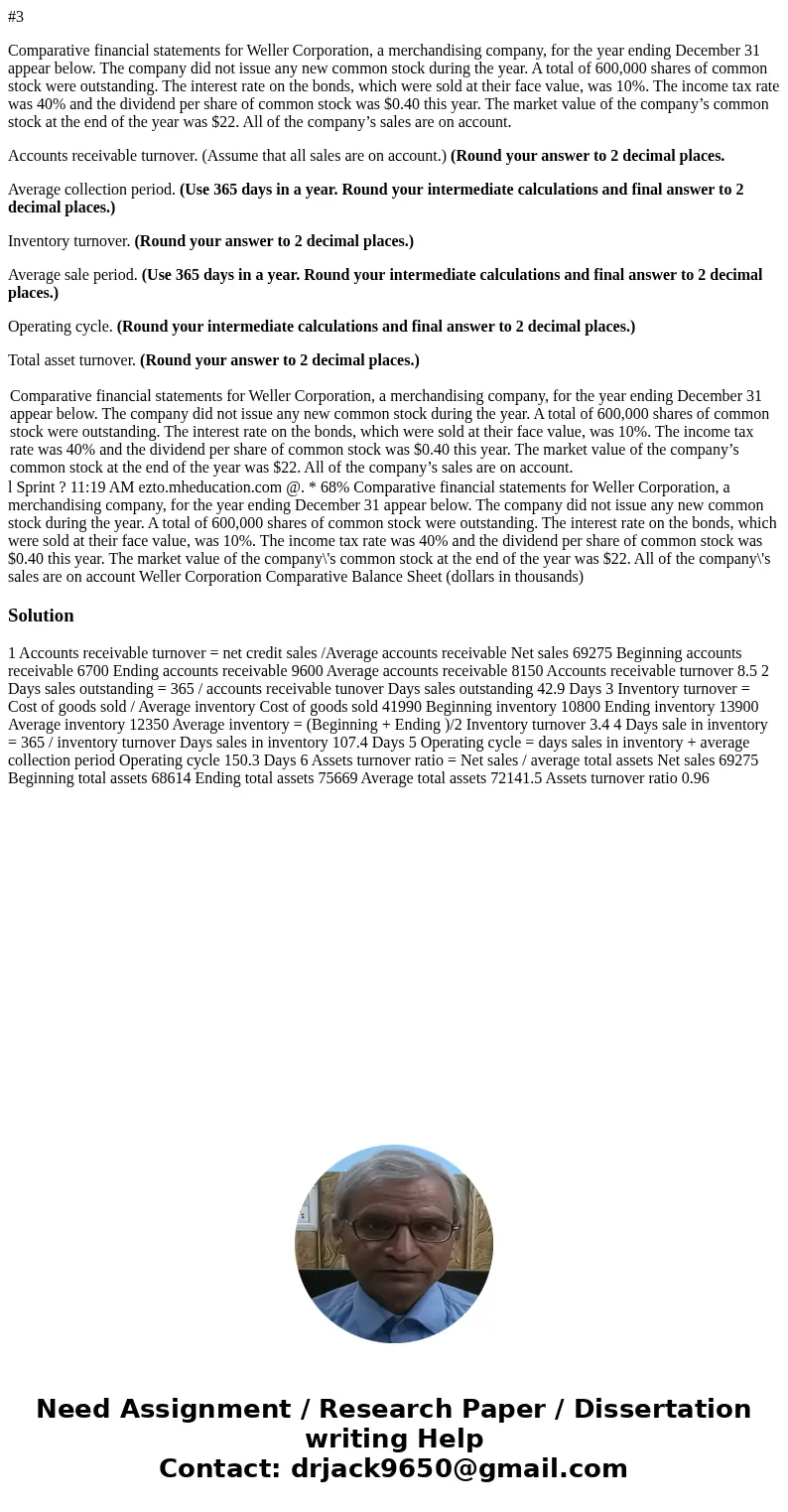3 Comparative financial statements for Weller Corporation a
#3
Comparative financial statements for Weller Corporation, a merchandising company, for the year ending December 31 appear below. The company did not issue any new common stock during the year. A total of 600,000 shares of common stock were outstanding. The interest rate on the bonds, which were sold at their face value, was 10%. The income tax rate was 40% and the dividend per share of common stock was $0.40 this year. The market value of the company’s common stock at the end of the year was $22. All of the company’s sales are on account.
Accounts receivable turnover. (Assume that all sales are on account.) (Round your answer to 2 decimal places.
Average collection period. (Use 365 days in a year. Round your intermediate calculations and final answer to 2 decimal places.)
Inventory turnover. (Round your answer to 2 decimal places.)
Average sale period. (Use 365 days in a year. Round your intermediate calculations and final answer to 2 decimal places.)
Operating cycle. (Round your intermediate calculations and final answer to 2 decimal places.)
Total asset turnover. (Round your answer to 2 decimal places.)
| Comparative financial statements for Weller Corporation, a merchandising company, for the year ending December 31 appear below. The company did not issue any new common stock during the year. A total of 600,000 shares of common stock were outstanding. The interest rate on the bonds, which were sold at their face value, was 10%. The income tax rate was 40% and the dividend per share of common stock was $0.40 this year. The market value of the company’s common stock at the end of the year was $22. All of the company’s sales are on account. |
Solution
1 Accounts receivable turnover = net credit sales /Average accounts receivable Net sales 69275 Beginning accounts receivable 6700 Ending accounts receivable 9600 Average accounts receivable 8150 Accounts receivable turnover 8.5 2 Days sales outstanding = 365 / accounts receivable tunover Days sales outstanding 42.9 Days 3 Inventory turnover = Cost of goods sold / Average inventory Cost of goods sold 41990 Beginning inventory 10800 Ending inventory 13900 Average inventory 12350 Average inventory = (Beginning + Ending )/2 Inventory turnover 3.4 4 Days sale in inventory = 365 / inventory turnover Days sales in inventory 107.4 Days 5 Operating cycle = days sales in inventory + average collection period Operating cycle 150.3 Days 6 Assets turnover ratio = Net sales / average total assets Net sales 69275 Beginning total assets 68614 Ending total assets 75669 Average total assets 72141.5 Assets turnover ratio 0.96
 Homework Sourse
Homework Sourse